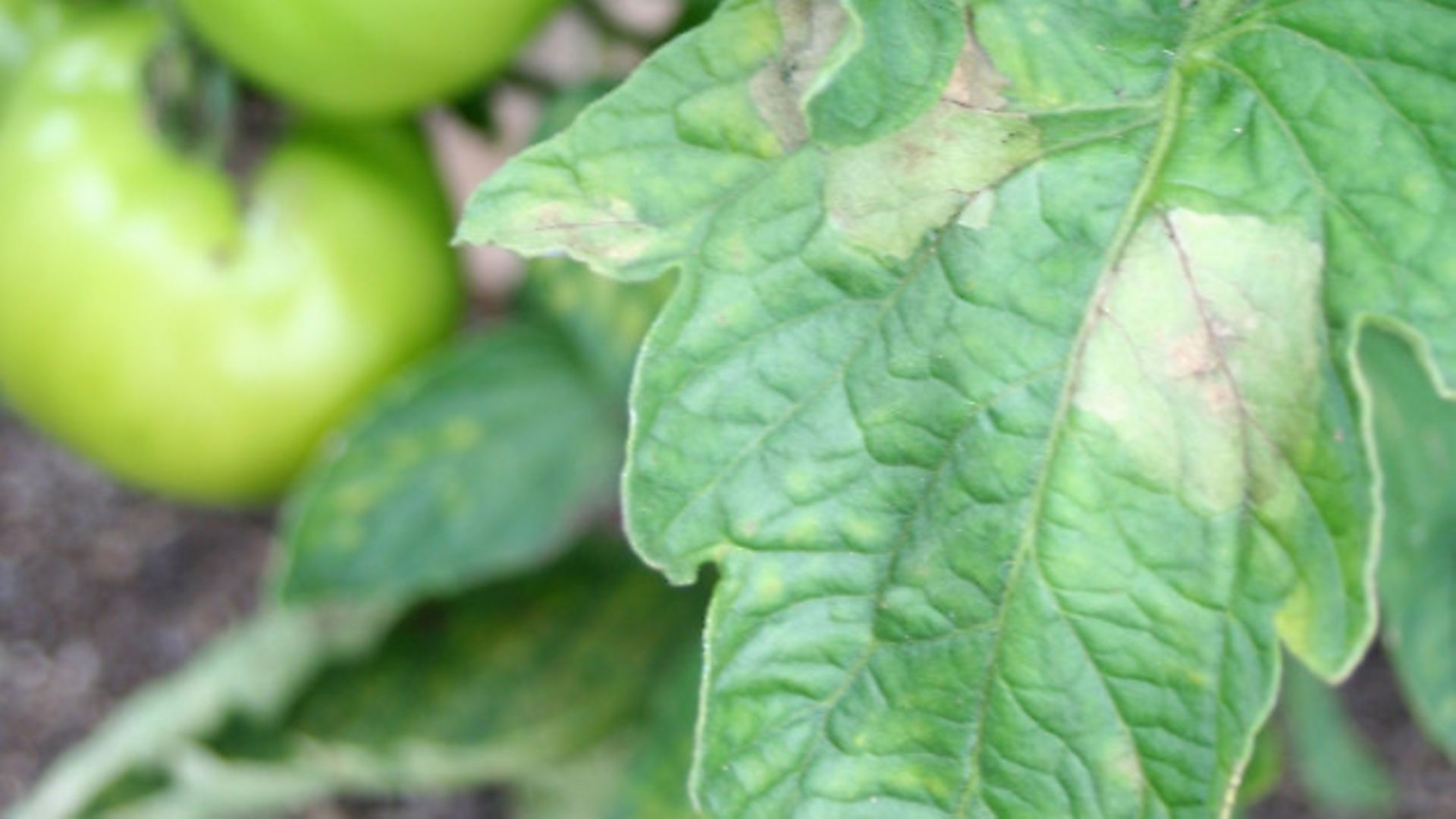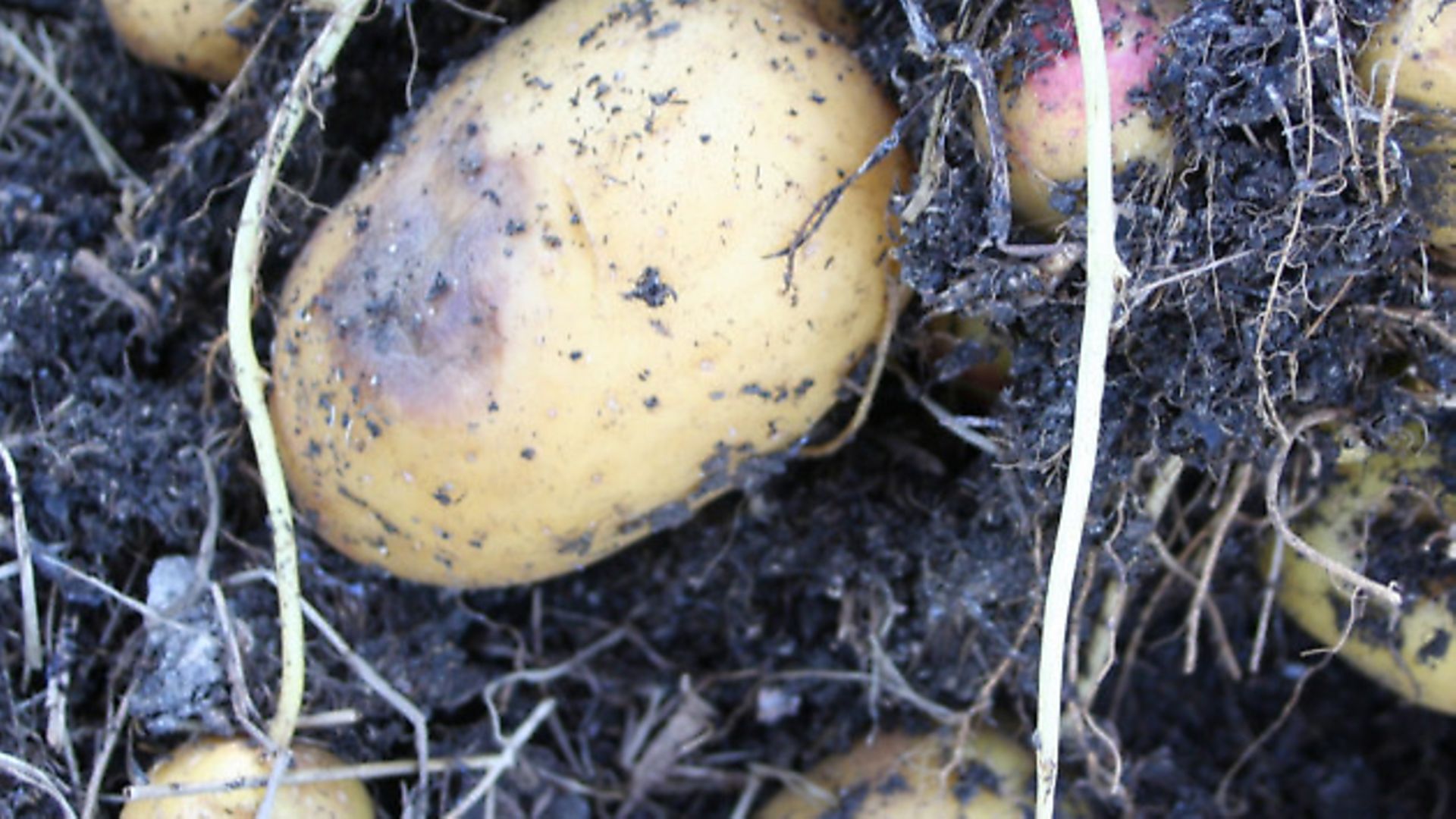Charles Dowding is a leading proponent of organic gardening and the ‘no-dig’ method. He writes for Country Smallholding every month. Here Charles gives advice on dealing with late blight on potatoes and tomatoes

Just one fungus called ‘late blight, or Phytophthera infestans, causes major damage to potato and tomato plants in dramatically short periods of time. Fortunately there are strict limits to the conditions in which it can develop, and you can reduce the harm by knowing these. Here I explain ways to sidestep blight and how to deal with it if your leaves become infected.

What is late blight?
The Latin name holds a clue to its character, but conditions must be absolutely right for infestation to be general. Blight spores reproduce only in humid and warm conditions, defined by what are called ‘Smith periods’ when, for two consecutive days and nights, the air temperature is always above 10C, and the relative humidity is above 90% for 11 hours each day.
Such conditions only happen when it rains a lot in summer, and can occur from about the middle of June in Britain, becoming common if July is wet, when late blight appears almost instantaneously in suitable conditions. Once established on plants, it multiplies so fast and spreads so widely on the wind, that the only way to maintain health is by keeping rain off potato and tomato leaves, because blight spores cannot multiply on dry leaves.
Late blight does not affect all members of the Solanum family, aubergine and tomatillo being unaffected by its ravages.
Early blight too!
Last spring, after the blighted year of 2012, I noticed the less harmful strain of ‘early blight’ (Alternaria solani) on first early potatoes, from infected tubers. Plants grew reasonably well, with some brown, ringed spots on leaves and slight browning of a few tubers, and without any infection spreading to neighbouring plants. Early blight is much less damaging and infectious.
Both types of blight require living plant tissue to overwinter, which in Britain means infected potato tubers are its only resting place, because all leaves and stems die in winter’s cool conditions.
How blight spreads
Even if you had blight last year, you can avoid it this year because of the spores not surviving through winter in Britain, in soil or compost. I have grown healthy potatoes near to where I had grown blighted ones the year before, after a careful harvest. With potatoes, it is important to harvest all blighted tubers because late blight may be present in them, and then in their growing leaves next spring.
As soon as the weather is both warm and damp, from about the middle of June, watch for any first sign of late blight on leaves and stems, showing as darker patches of translucent brown. Should the weather suddenly change to dry and sunny, the infection may not spread too much and sometimes you can cut out the worst leaves and stems, but the most common scenario is for blight to kill plants within a week or two. Best cut off potatoes at soil level before this happens and compost the debris (see below). Some varieties such as Charlotte show resistance to blight infecting their tubers; others are best harvested on the next dry day.
When there is enough warmth and moisture, usually in July, the spores multiply ferociously fast and healthy plants can become a mushy mess within a week. Anybody who has suffered this knows what a horrible experience it is. See below for some ways of avoiding it.
Best strategies for potatoes and outdoor tomatoes
However we run our gardens, in sufficiently wet and warm conditions, late blight spores become numerous enough in moist summers to infect the leaves of outdoor potato and tomato plants, at any time in summer and sometimes as late as September. There are three remedies: early harvesting of potatoes before blight arrives, growing resistant varieties of potato, and keeping leaves of outdoor tomatoes dry.
• Growing first early potatoes is a sure way of avoiding late blight because they finish growing before it arrives. However, for winter use, first earlies do not store too well and second earlies are a better option for worthwhile harvests before blight is prevalent. Suitable varieties include Arran Pilot, Estima, Jersey Royal, Maris Peer, Rudolph and Wilja. My favourite is Charlotte for its high yield, fine flavour, resistance to blight infecting the tubers, and keeping well in store, just in sacks in the shed.
• Sarpo potatoes show impressive resistance to blight, far more than other temporarily resistant varieties such as Lady Balfour, which was healthy for a year or two until a new strain of late blight evolved. Sarpo varieties have stood the test of time, but there has been concern over their flavour and it is important to harvest tubers by mid September, otherwise they become starchy. The head chef at River Cottage, Gelf Alderson, did a cooking and taste test of five Sarpo varieties, concluding that of those he ‘boiled, mashed and chipped, the two stand-out varieties were the Shona and Axona’ (December 2013). These varieties also store well.
• For tomatoes, there is only partial blight resistance at best: over the years, I have grown many supposedly resistant varieties without success. However, in a dry summer such as last year, and in any summer if you can work out a way to keep leaves dry, outdoor tomatoes are possible. Keeping all rain off is easier said than done and my best results are from growing an early-cropping variety Sungold, which also tastes superb, to have a reasonable harvest before any blight arrives.
Blight-free tomatoes undercover
Until the middle of June there are no worries. Then, from about late June onwards, because blight needs wet leaves to establish, you can avoid it on tomatoes undercover by watering the soil and compost only. In greenhouses with window vents above plants, keep them closed and use only the door for ventilation. In polytunnels, do not plant tomatoes too close to the door to prevent any leaves being repeatedly wet from rain blowing in.
Lower leaf removal helps, cutting off all leaves below the lowest fruiting truss. Also cut the first truss in half to help its few remaining fruit ripen quickly, after which you can cut off some more lower leaves, up to the second truss. As the season goes on, follow this method but don’t overdo leaf removal, even in September, because fruits won’t taste so nice. Having just the lower leaves out of the way makes watering easier, without splashing the plants. You can keep the atmosphere drier by watering less frequently and more thoroughly, say every four days, which is especially effective when compost has been applied to the surface.
If you see any blighted leaves or fruits, remove them to the compost heap and stay vigilant. Blight is easier to contain on plants undercover where leaves are mostly dry, and in 2012 for example I experienced no blight on my polytunnel tomatoes, using the methods I describe here.
Composting blighted plants – yes you can!
The usual recommendation is for blighted leaves, fruits and tubers to be burnt, arising from the mistaken worry that blight survives the winter in compost and soil. Fortunately this is not the case in Britain, although the disease evolves continually.
I have always composted my blighted leaves, fruits and tubers of tomato and potato. It helps that heaps fill fast in late summer and autumn when the blighted debris then decomposes rapidly and fully.
In spring the resulting compost can be spread wherever needed, and I even use it in polytunnels where tomatoes are then planted, and they grow healthily without blight, as long as I keep their leaves dry through summer.
This article appraed in the June 2014 issue of Country Smallholding. Find out more about Charles Dowding, his courses and books at www.charlesdowding.co.uk
Image(s) provided by:
Archant







